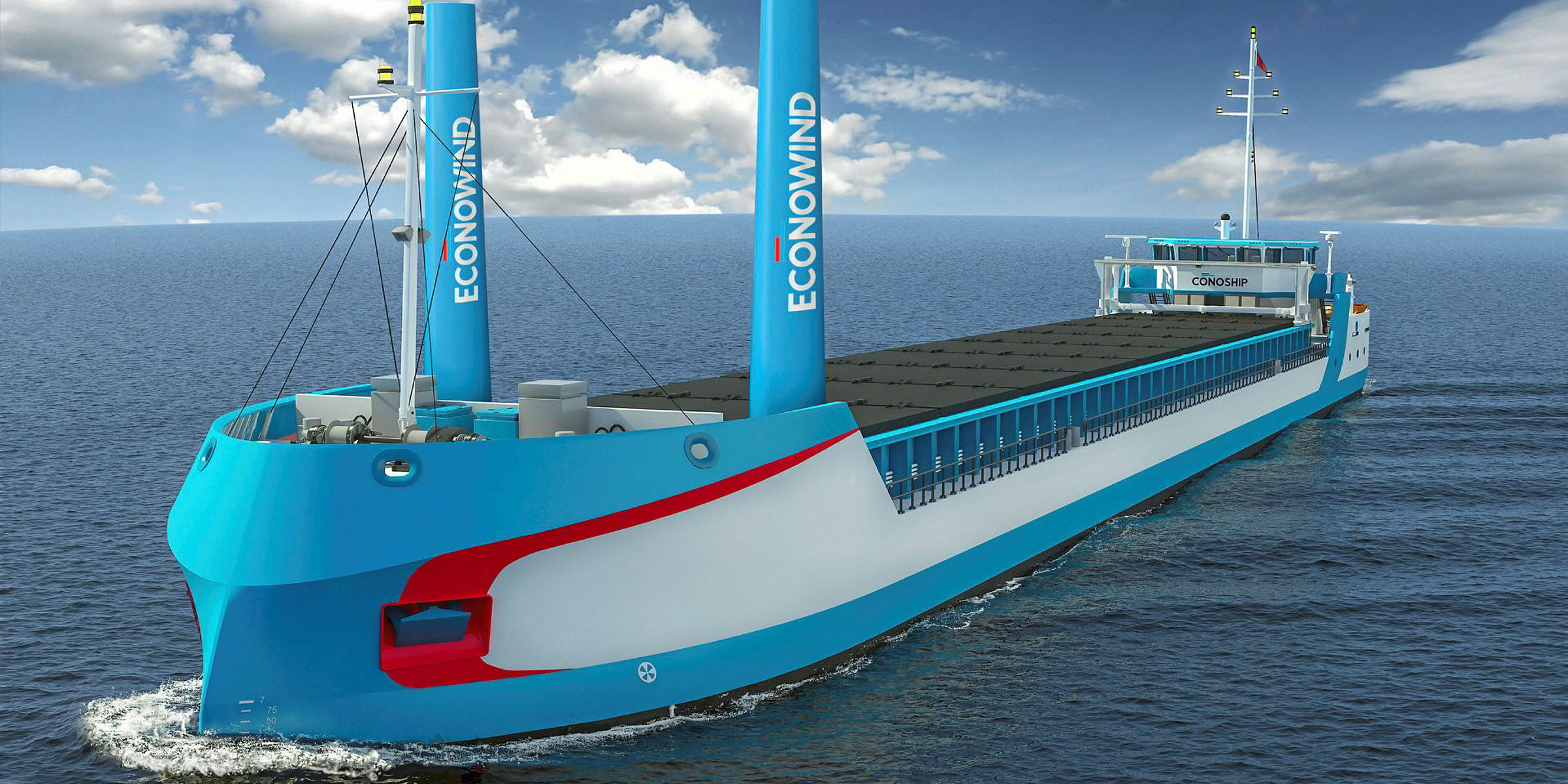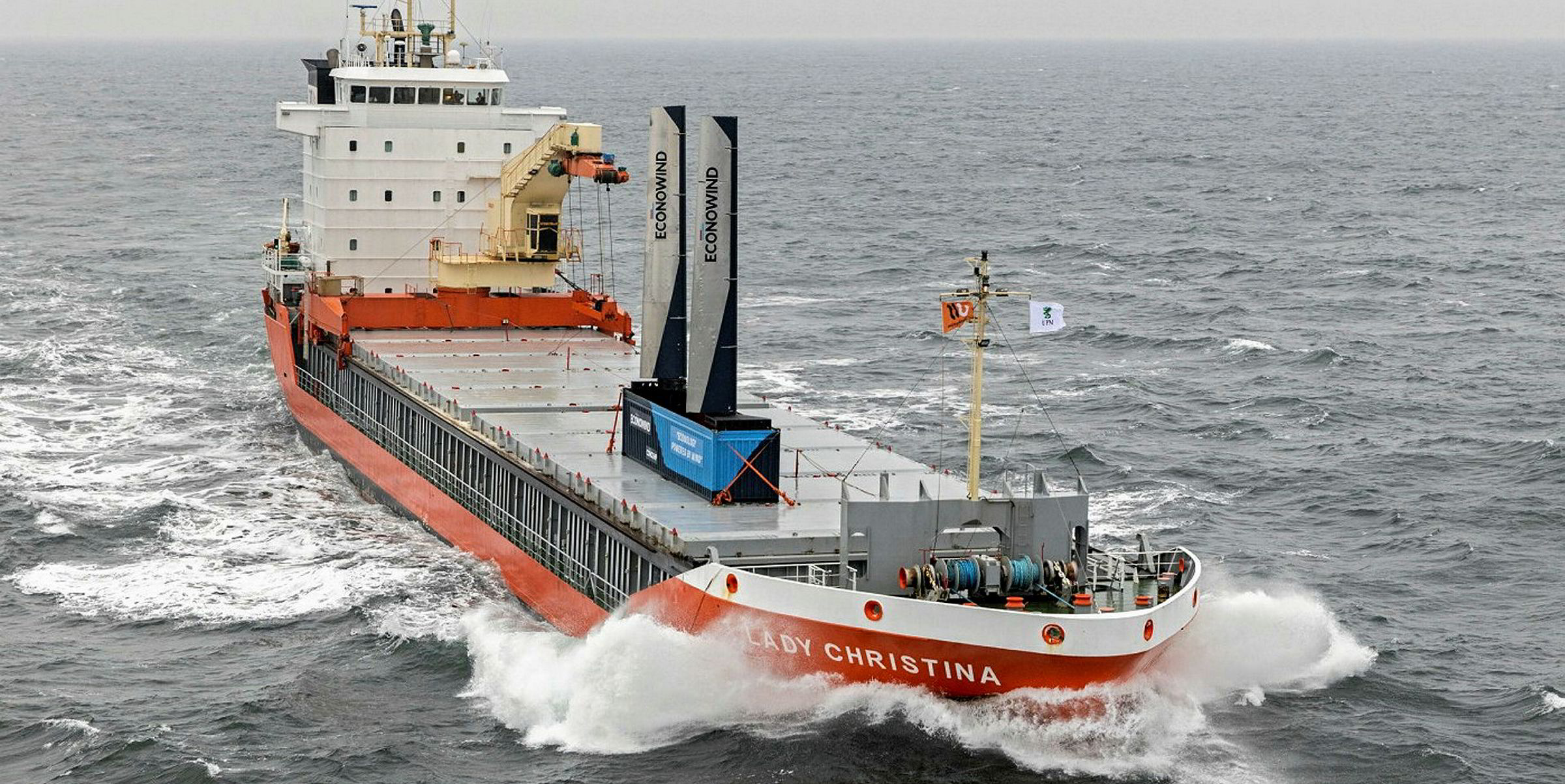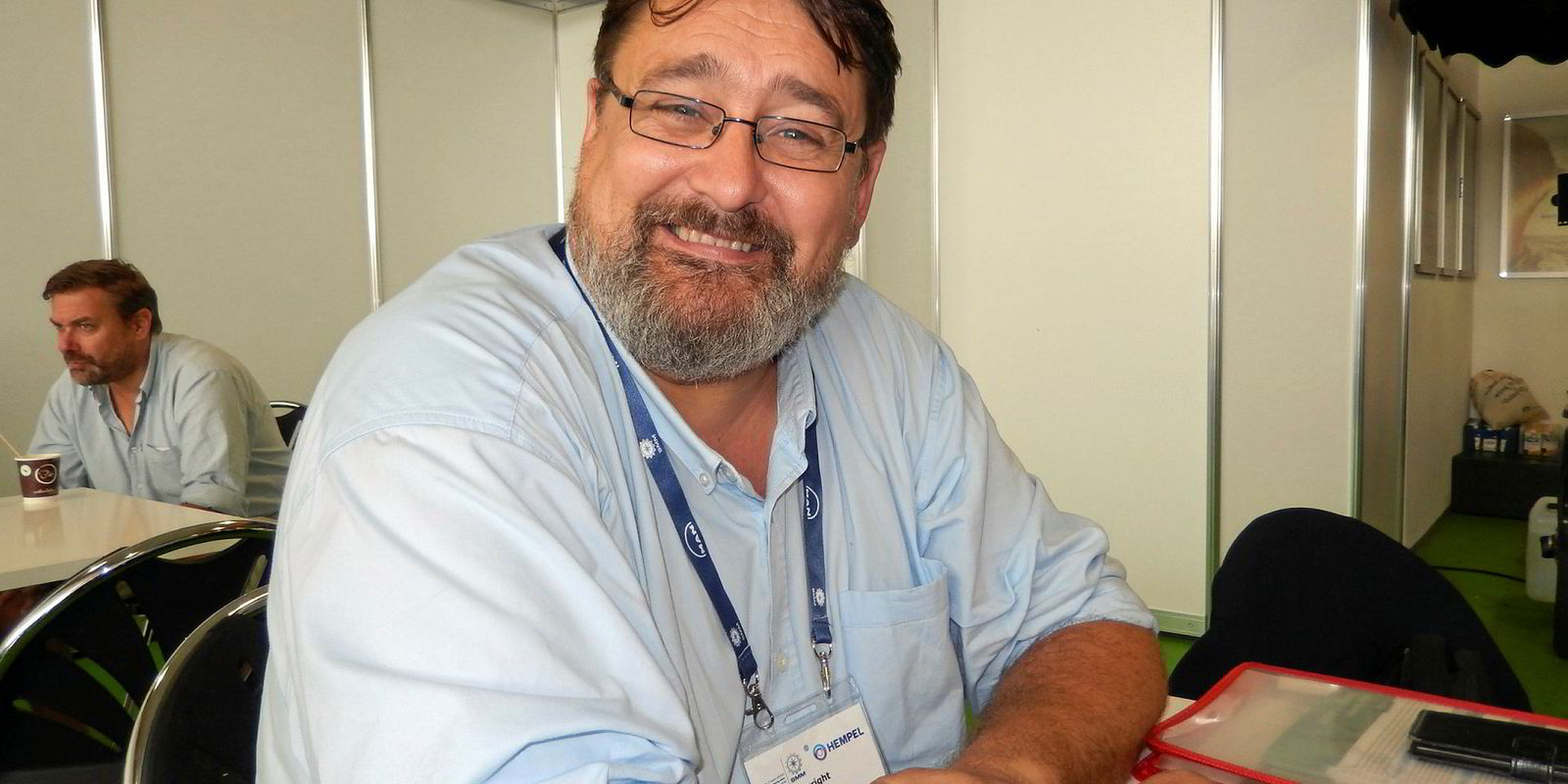An aeronautical approach to adding wind propulsion to a ship will undergo its first open ocean tests this week.
A first Ventifoil unit has also been sold to a Dutch shortsea company that operates a fleet of eight MPP dry cargo carriers.
A system ordered by Van Dam Shipping will be retrofitted in October to a 3,800-dwt vessel it owns.
Sea trials
Ventifoils, designed by Dutch company eConowind, have been tested on three North Sea and Baltic Sea voyages since November 2018 on the 5,400-dwt multipurpose vessel Lady Christina (built 2000).
The Wijnne Barends-operated ship, fitted with a containerised system, was due to set off this week on a voyage to Africa, during which it will experience a wider range of conditions.
The Ventifoil comes in two versions. The “boxed” system has two tapered 10.25-metre vertical wings that fold out of a 40-foot container. The larger permanent systems for retrofits or newbuildings have 16-metre straight-sided wings.
The 16-metre units generate double the effect of the smaller wings.
Both types are thicker than aircraft wings and use boundary layer suction. A lift coefficient of around seven has been achieved in the Lady Christina tests, compared with about 2.5 for plane wings. eConowind says a conventional sail would need to be six times larger to net the same energy.
Price point
Majority owner Frank Nieuwenhuis claims the system will typically give the same effect for about half the cost of Flettner rotors that are being tested by Maersk Tankers, Viking Line and Bore. Flettner rotor maker Norsepower says a two-rotor refit typically costs €1m to €2m ($1.1m to $2.2m).
Nieuwenhuis, a mechanical engineer, says Van Dam calculates its retrofit will pay for itself in two to three years. Savings are relative to the size of system and ship, but the Lady Christina tests have shown reduced fuel consumption of 700 to 800 litres per day in good wind conditions.

We need a full year of tests for different voyage conditions, but we have found it comes very close to our theoretical model, and that is very encouragin
Frank Nieuwenhuis
Fuel savings of 15% are possible in the right winds and depending on the size of unit, but the average is more likely to be 8% to 10%, Nieuwenhuis adds.
Size matters
“We need a full year of tests for different voyage conditions, but we have found it comes very close to our theoretical model, and that is very encouraging. The first tests also provided technical input on the automation and strength of the systems,” he says.
The Van Dam ship will take part in the Wind Assisted Ship Propulsion project being run by Netherlands Maritime Technology with ABS to provide independent research results into systems.
Other owners are looking seriously at the system, Nieuwenhuis says, and financial investors that have come into the company are considering setting up a leasing unit for sales.
“There are logistical advantages to the containerised version, but in the end I think most shipowners will find that size matters and will start to build more retrofits.”
Stronger forces
Containerised units offer flexibility, as they can be moved from ship to ship depending on the benefit to be gained from the wind on voyages, Nieuwenhuis says. Generated force is transferred to the deck via normal container twist locks able to withstand much stronger forces.
The Ventifoils can be rotated automatically to find the optimal angle to the wind, delivering forward propulsion at up to 25 degrees against. They are stored away in the container during unfavourable conditions.
eConowind was set up to develop an idea originated by Netherlands ship designer Conoship International. Delfzijl-based Wijnne Barends, which is part of the Spliethoff Group, will test the eConowind unit for up to a year on the Lady Christina, which was designed by Conoship.







